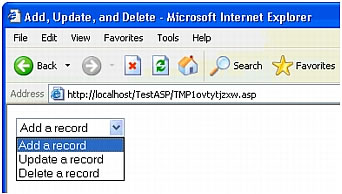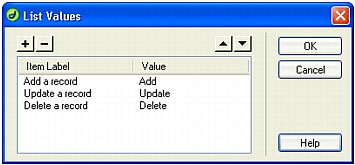Form parameters
Form parameters
Form parameters are sent to the server using an HTML form using either the POST or GET method. When using the POST method, parameters are sent in the body of the message. In contrast, the GET method appends parameters to the requested URL.
You can use Dreamweaver to quickly design HTML forms that send form parameters to the server. For instructions, see Creating Forms. Be aware of the method you use to transmit information from the browser to the server.
Form parameters take the names of their corresponding form objects. For example, if your form contains a text field named txtLastName, then the following form parameter is sent to the server when the user clicks the Submit button:
txtLastName=enteredvalue
In cases where a web application expects a precise parameter value (for example, when it performs an action based on one of several options), use a radio button, checkbox, or list/menu form object to control the possible values the user can submit. This prevents users from typing information incorrectly and causing an application error. The example below depicts a pop-up menu form offering three choices:

Each menu choice corresponds to a hard-coded value that is submitted as a form parameter to the server. The List Values dialog box--shown below--matches each list item to a value (Add, Update, or Delete):

Related topics
- URL parameters
- Creating URL parameters using HTML links
- Retrieving form and URL parameters
 |  |





